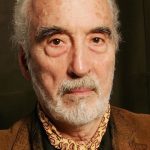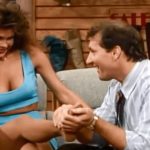MASH was one of the all time great sitcoms, and shows in general. It chronicled the lives and dealings of the medical crew working to save lives during the Korean War. And while it was an unlikely setting for a comedy, it blended a perfect amount of drama, heart, and passion with great jokes, zany characters, and hilarious plot lines. The series finale is still one of the most watched episodes of television, period. But there are elements to the show that even a big fan of MASH might not know about. In this video, we’re diving into some secrets about MASH! So stick around, as Facts Verse presents: M*A*S*H TV Show Secrets Not Revealed Until Now
An Important Mustache
Mike Farrell joined the show in the fourth season. His character replaced Trapper John, played by Wayne Rogers, who left the show because he’d grown tired of it. Mike played the role of Captain B.J. Hunnicutt and became a fan favorite on the show. When it comes to his facial hair, he follows the mold of a clean-cut doctor. Occasionally, rocking some scruff when it makes sense for the plot of an episode. But when the seventh season started up, Hunnicutt suddenly had a mustache. But it wasn’t because he randomly decided to try out a new look.
He asks directly to rock the stache by his costar, Alan Alda. Alan and Mike were BFF’s in real life as well as on the show. Alan gets the idea that their characters consisting so many similarities. A mustache is helpful for fans of the show to distinguish between them. Of course, it’s a bit odd that this issue didn’t arise for Alda until three seasons with Mike. Either way, Mike agreed to the suggestion and grew out his mustache. It ended up serving a dual purpose however, as it kind of ran parallel to Hunnicutt’s evolving stance on the war and being in the armed services.
Missing Pages
These days, productions are always spooked by leaks of plot information and online spoilers. So it’s never surprising when they keep people on the show, even cast members, in the dark when it comes to what’s going to happen. The fewer people who know about big plot twists, the less chance there is that it’ll get leaked online. But back in the 1970’s, they still knew the importance of keeping a tight lid on info getting out. So when they made the huge decision that Henry Blake was going to be killed, they took precautions to keep it on the DL. Because while it was common knowledge that McLean Stevenson, who played Blake, was leaving the show, no one knew exactly how that would go down.
It was revealed that Blake would be heading home from Korea, which would make sense as a plot element for a character leaving the show. But the writers and producers decided they’d make it a much darker exit, and Blake’s plane would be shot down, killing the character. To make sure people didn’t know, they handed out incomplete scripts. Even members of the cast received copies with pages missing, so they wouldn’t know what happened. It was only right before the wrap party that most of them were given the final page, detailing what happened to Blake. The only person who knew was Alan Alda, but he kept the secret intact until the producers decided to reveal it to everyone.
Real Fires
The series finale, which was watched by a record breaking number of people, showed the medical staff having to abandon their camp because a brush fire is approaching it. Later in the episode they return, only to find that everything has burned to the ground. The only thing left standing are the foundations of the buildings. But while this might seem like an incredibly bold and heart wrenching move to incorporate in the final episode of the show, it was actually a total coincidence.
That’s because there was an actual forest fire at the Fox Ranch, where the show was filmed. Located in the Santa Monica mountain range near LA, the set was literally burned to the ground by a fire, while they were filming the final episode. Naturally, knowing that they couldn’t film anything more there, and that it would make for a shocking finale, they quickly decided to add that feature to the plot of the finale.
Who’s Laughing Now?
The standard for comedy series back in the day was to have either a live studio audience or add in a laugh track. The idea being that the laughter will guide the viewer at home to know where the funny parts are, and to feel like they are laughing along with other people. It might seem silly, but it can be effective when done right. If you watch an episode of Friends or Seinfeld, for example, you hardly notice the audience except in the right moment. But there was something innately awkward about having a laugh track on a show set in a war zone, even if it was a comedy.
To their credit, none of the people who actually made MASH wanted a laugh track. But the network execs insisted, concerned that people wouldn’t realize it was a comedy without the guidance of the canned laughter. But eventually everyone realized it didn’t bring a whole lot to the experience. So over the years, the volume and frequency of the laugh track got lower and more rare. It never fully went away for the airings in America, but it was much less noticeable. And on reruns shown on the BBC, the laugh track is completely removed.
Cancelling The Show
The network also meddled a fair amount in the content of the show. CBS knew they had a good product but that, early on, it wasn’t getting the ratings they needed. So they hung this over the production with a constant threat to cancel the series. That is, unless the show listened to their notes on what to show on screen and what to write about. So, especially in the first couple of seasons, CBS meddled a lot with the show’s content. This was often centered around seeing blood in the medical unit, or about coarse language, despite the fact that both of those things were quite common in war zones. They also were always threatening to cancel the show when the writers would use more intense plot points. They worried that audiences would tune out.
Guest Stars Who Became Famous
Most long running shows have a ton of guest stars on them, and there are usually some who go on to achieve major stardom. This was certainly the case with MASH. There were a number of guest stars who became big deals in Hollywood. Ron Howard appeared as a Marine on MASH, though one could argue he was already relatively famous because of this childhood acting on the Andy Griffith Show. But several unknown actors appeared on MASH and went on to become famous.
These included Shelley Long, Laurence Fishburne, John Ritter, and Rita Wilson. The list also includes Leslie Neilson, Blythe Danner, Teri Garr, and George Wendt. Even Andrew Dice Clay, of all people, had a small role on MASH before becoming a big time stand up comedian. And Patrick Swayze had a somewhat ironic turn on MASH, playing a injured soldier who was also suffering from leukemia. Swayze went on to become a huge star in the 1980’s before succumbing to cancer in real life at 57 years old.
What’s in a name?
The sheer number of characters in MASH over the years meant that the writers had to come up with a LOT of different character names. Evidently, this proved difficult because they started realizing they had used most names they could think of. Of course, these days, it’s pretty easy to find lesser common and rare names on the internet. But back in those days, it was a group of people sitting in a writer’s room, trying to come up with names they hadn’t used before.
They eventually settled on using ‘generic’ names from the phonetic alphabet that the military uses when it came to naming the nurses. They also tried to find gimmicks and shortcuts to helping them decide what to name characters. For example, they used the first names from Major League Baseball’s California Angels team of 1977 for the names in one sixth season episode. It’s just too bad it wasn’t later on, cause it would have been hilarious to see names like Shaq and Kobe on MASH.
Hated By the Creators
The show was based upon the book by Dr. Richard Hornberger, who was essentially the real Hawkeye. First it was made into a movie, before becoming the hit sensation on TV. And yet, the original author hated the show. In particular he despised the fact that, unlike him, the fake Hawkeye had anti-war feelings, and wasn’t afraid to express them. He once said that after the show ended, the only thing he missed about it was the steady royalty checks. Even Robert Altman, who directed the film version, was disappointed with how the TV version came out.
Though oddly enough, he came from the exact opposite perspective as Hornberger. Altman’s movie had had a strong streak of anti-war sentiment, as well as being very anti-authority. And while the show continued some of that, it definitely toned it down a bunch from the movie version. Altman felt like the show completely missed the point of what the movie tried to convey. Interestingly, Altman also found the show racist. He’s on record as saying that the takeaway from many of the episodes of the show was simply that Asians are the enemy.
Now it’s time to hear form you. Did you know about any of these secrets from behind the scenes of MASH? Which was most surprsiign to hear? Let us know in the comments section below!


